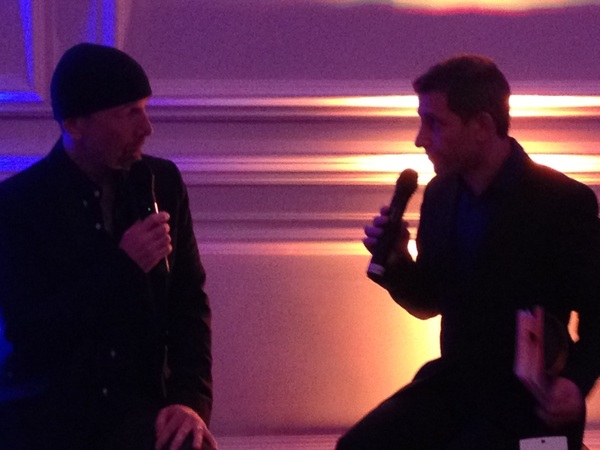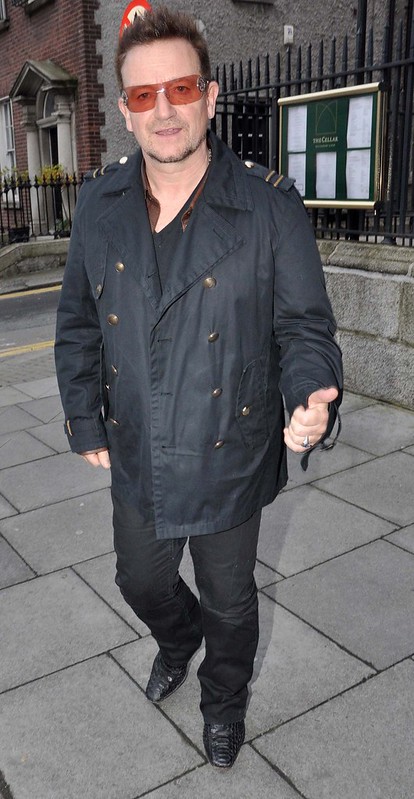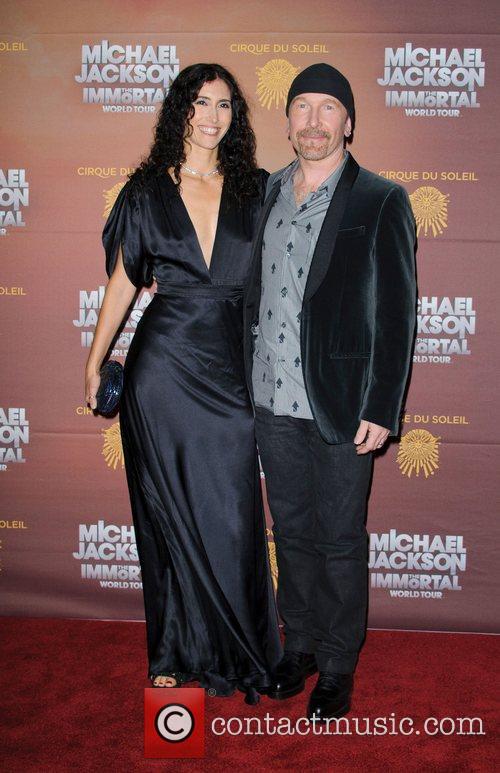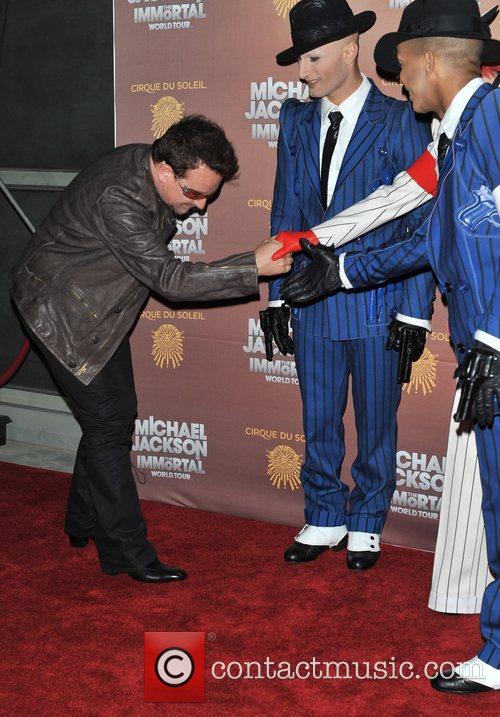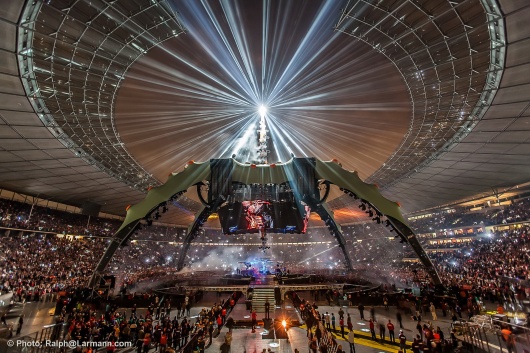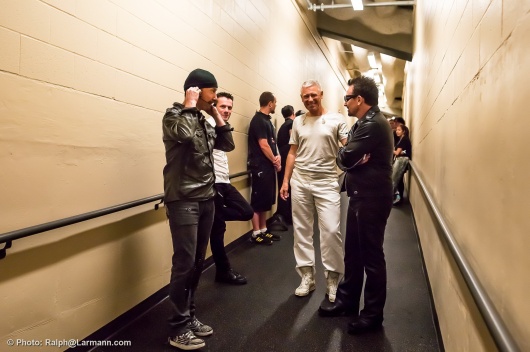The German website U2Tour.de has posted an interesting interview with Ralph Larmann, the photographer and journalist who published the photography book From the Ground Up.
U2tour.de: Dear U2tour.de fans, I am delighted to have a very special interview partner today and give a warm welcome to Ralph Larmann, the photographer and journalist, who is about to publish the photography book From the Ground Up. The book is to be published on 18 October 2012 and I am glad to have the opportunity to do a phone interview with him. Most certainly, I have some exciting questions, which we collected among the fans prior to today. Mr. Larmann, could you please introduce yourself to those readers who are not yet that familiar with your work as a U2 photographer and also please tell us how you got into journalism.
Ralph Larmann: Well, I took my own very special path. Originally, I am a drummer, studied popular music in Rotterdam (The Netherlands) and then, about 25 years ago, moved into journalism as I was very interested in interviewing musicians and in releasing stories about music in professional publications. I started writing, yet, at the same time, I also wanted to take the pictures accompanying my stories. Thus, I more or less got into photography - writing stories, doing interviews and then myself taking photos of my interview partners, objects, concerts or whatever. So it evolved sort of automatically. I published my first books in the early 90s. Back then, I composed a book, or rather documentation, for Marek Lieberberg (German concert promoter) called Heute die. Morgen du (Today it's them. Tomorrow yourself) covering a concert against right wing extremists in front of the Festhalle in Frankfurt. The next book was 10 Jahre Rock am Ring (10 Years of Rock am Ring, a huge German music festival), again for Marek Lieberberg, followed by close cooperation with various artists. I worked a lot with Udo Lindenberg, Fury in the Slaughterhouse, Howard Carpendale, the Schürzenjäger (all German acts)...indeed, a very broad range. I covered very diverse fields of music, including classical music. David Garrett's current live DVD, for instance, is designed using exclusively my photographs. And in comedy, the current Bülent Ceylan DVD (German comedian), recorded at Commerzbank Arena in Frankfurt. By now, I cover a very broad field. There was, for example, my latest project photographing the Golf VII presentation by Volkswagen in the Neue Nationalgalerie in Berlin. So, I feel at home in the field of events and concerts and that is the world I feel utterly comfortable in, that I enjoy enormously and in which, I feel, there is no end in sight for me. There is progression after all: events and concerts visually evolve in a very interesting way and there are always new, exciting visual productions. This is my profession and this is where I feel at home!
U2tour.de: You perfectly anticipated my next two, three questions and already mentioned that you also cover industrial photography. On your homepage, I noticed some photos related to industry and architecture, yet the majority is rather music-related. Knowing that you studied music and that you are a drummer, I now fully understand why and get to my next questions: How did you get so close to U2? There is the longtime U2 photographer Anton Corbijn, who is very close to the band, and Andrew MacPherson has taken quite some pictures of U2 - How did you get into the large U2 family?
Ralph Larmann: I published two photography books, Stage Design (2007) and Stage Design Emotions (2010) and for the first one, I took pictures of the Vertigo production. On this occasion, I met Willie Williams and, at the Berlin concert, gave him a CD-ROM containing my photos. Two months later, he wrote me a short mail telling me that he finally found the time to look at my photos and that he just wanted to let me know that these were the best he had seen of the Vertigo production and whether he could use them for his website. Most certainly, this was a huge compliment - coming from a designer like Willie Williams, who I consider one of the most creative and best designers in show and stage business regarding modern stage productions. At the same time, I was also photographing stage stories for my first Stage Design book. And learning that he (Williams) had also designed George Michael's 25LIVE, I asked for the permission to also take pictures of that production for my book. Two days later, I got the OK from the management. After seeing my pictures, they called me and asked whether I could take pictures of the production in Copenhagen directly for George Michael. Well, and when U2 started their 360° tour, I knew that I absolutely had to photograph this tour for my second Stage Design book. I had stayed in touch with Willie Williams and he said: "Come to Berlin and photograph that show! The band is eager to meet you, wants to see your photos and wants to see how you catch the show in pictures."
For that concert, I upgraded my equipment a bit, in order to be able to take 360° roundshot pictures, perfectly fitting the 360° tour. In Berlin, I photographed my first roundshots - at that time, not from the stage. The band was not familiar with that photography technique but liked it that much that they told me to come on stage with them in Gelsenkirchen. This is when I personally met the band. Most certainly, Larry Mullen, who was next to me on stage, wanted to know who he was dealing with. Among the Berlin photos, there was this star picture that you are familiar with. This photo was so popular with everyone involved in the production that, when arriving in Gelsenkirchen, I saw that everybody used it as wallpaper on their cell phones or notebooks. And even Bono came up to me and explicitly thanked me for my Berlin photos and this felt like knightly accolade to me right there. To receive such a compliment from Bono, from this artist, is just like a dream! The fact that he appreciates my pictures this way. I then took roundshots in Gelsenkirchen which also turned out fantastically and they were perceived brilliantly. So, as a consequence I was directly booked. During the two shows at Wembley Stadium in London, I photographed directly for the band and management. Some of these pictures were used for promotion and for concert posters. The Berlin picture became the official cover of the tour programme and was available as poster at the merchandising booths. As such, I ultimately got in through my work. Willie Williams then wrote the foreword to my Stage Design Emotions book, which was certainly very special to me. I will never forget the moment when he sent me his foreword and I read it. The way he perceives my work and described it was such a huge compliment that I got all teary-eyed. The band liked the way I caught their shows in photos and as a next step I directly accompanied the band in America for one week. In the US, I took pictures in St. Louis, at New Meadowlands Stadium in Newark and in Minneapolis. It was my objective to take pictures of a quality exceeding the 35mm format. During these three concerts and during set-up in Newark and taking down the stage in Minneapolis, I used one, respectively two Leica S2 cameras to shoot in digital medium format, which quality-wise is a dream come true. There are more than 180 of my pictures in this book, more than 100 of which were taken with the Leica S2s. These have a very unique quality. The depth and detail resolution is fascinating! This was my objective: to photograph this tour, this unique stage, this production in a quality exceeding the normal standards; and I have to say that I succeeded.
U2tour.de: Absolutely. As you said earlier, your Berlin pictures created quite a stir! I have it right in front of me on my notebook and it is just unbelievably great! I personally attended this show. You listed the concerts you attended, have you been to any other concerts on this tour? In your book, we read that you were travelling with the band in their private jet. Or was that just Dylan Jones, your author?
Ralph Larmann: No, I was travelling with the band. Ok, Bono always travelled separately (laughs), as he was travelling also to other destinations, but other than that I was in the same jet as the band, the production and management team; altogether roughly 50 people.









